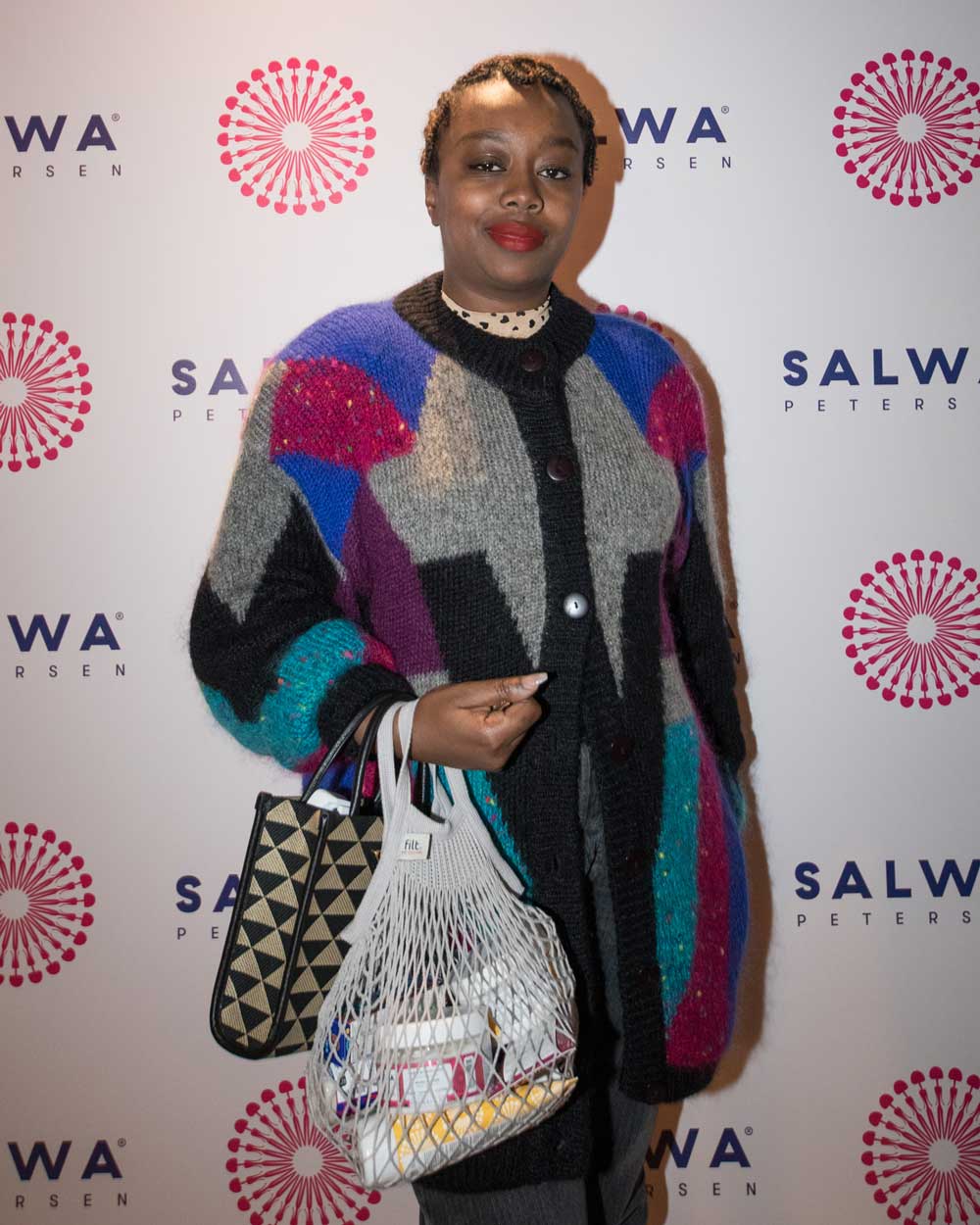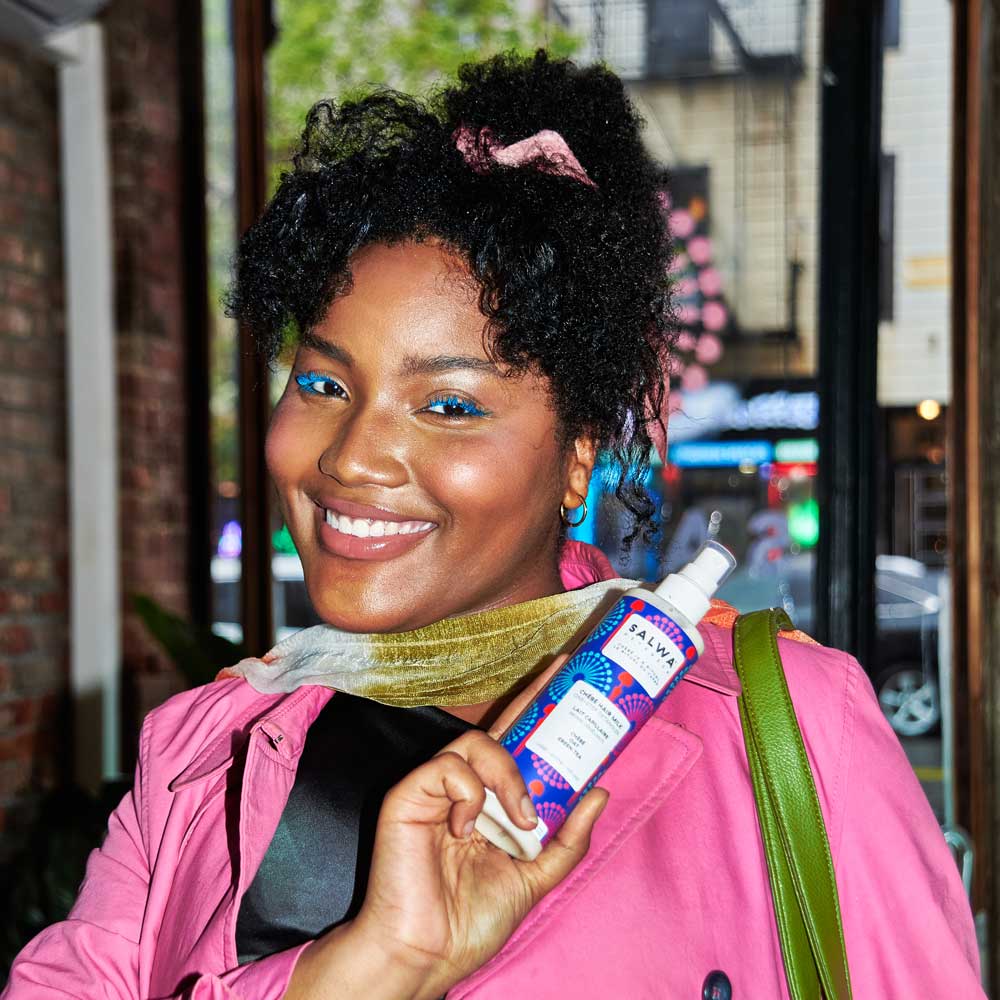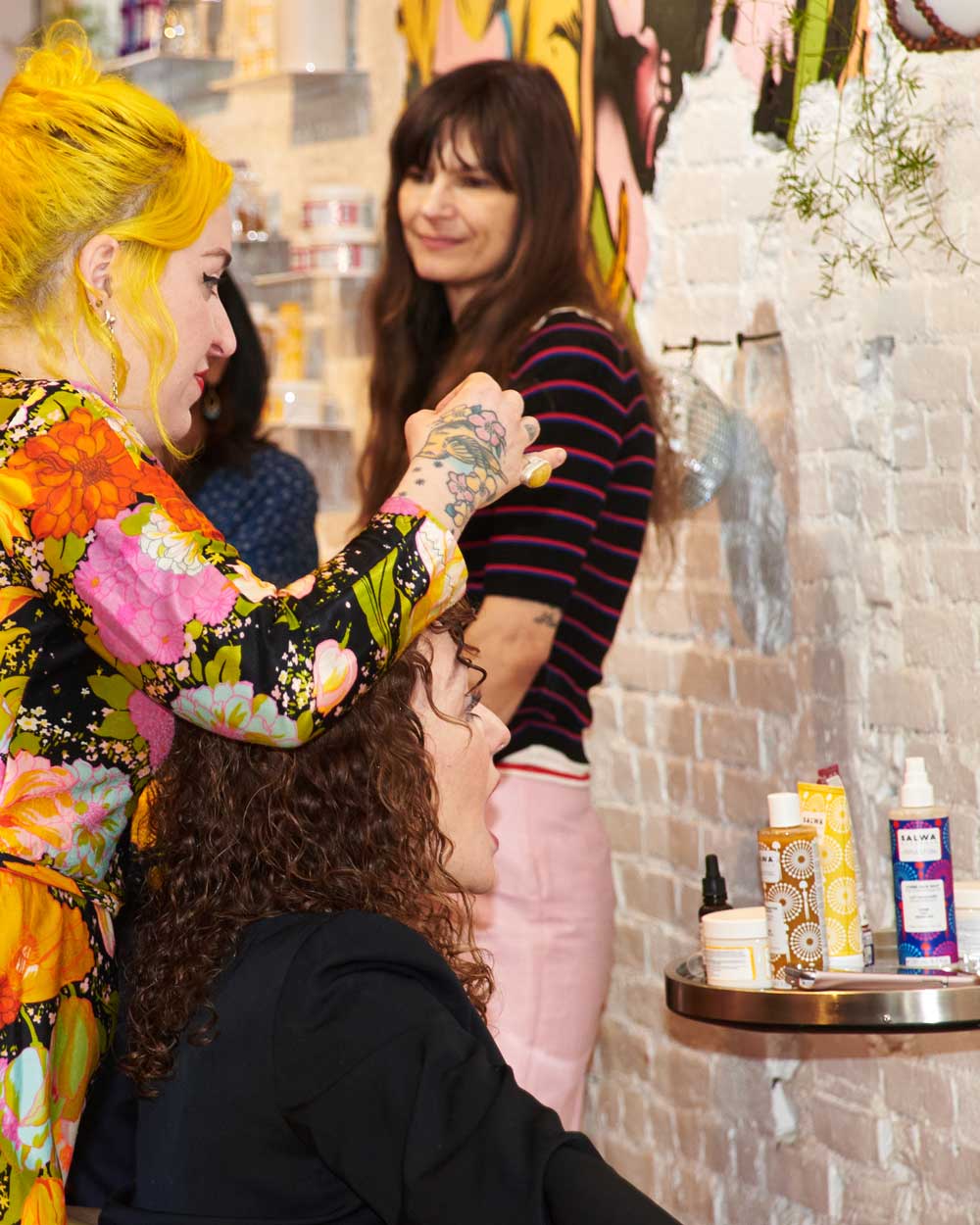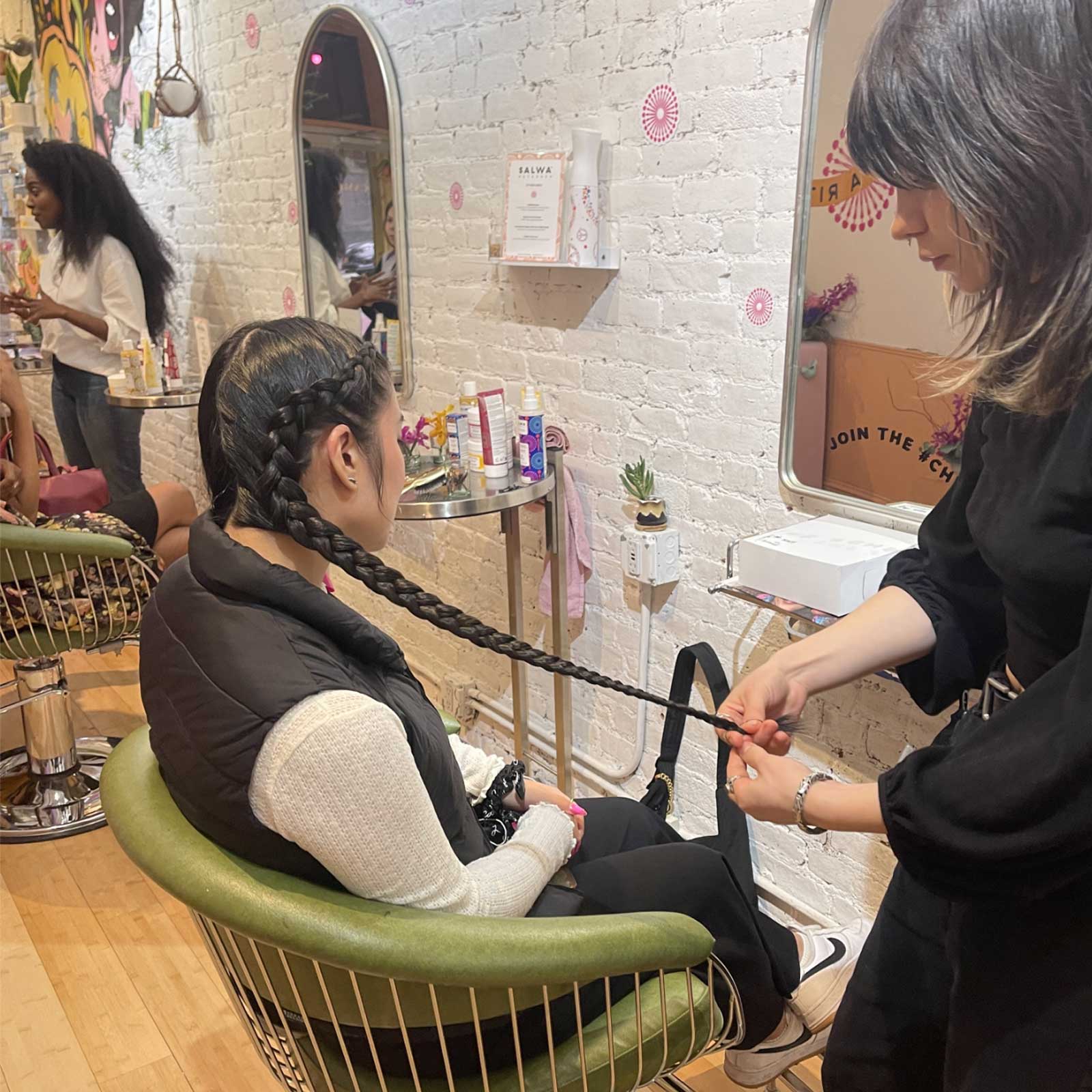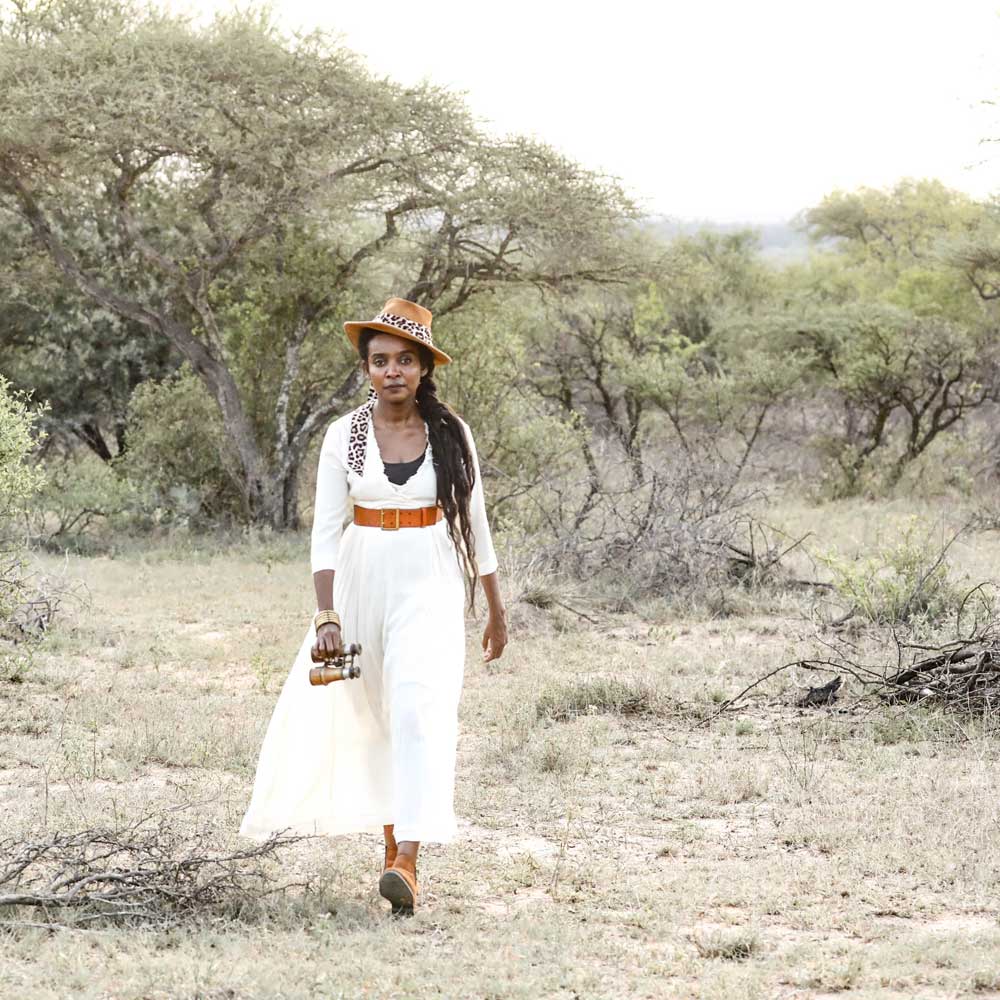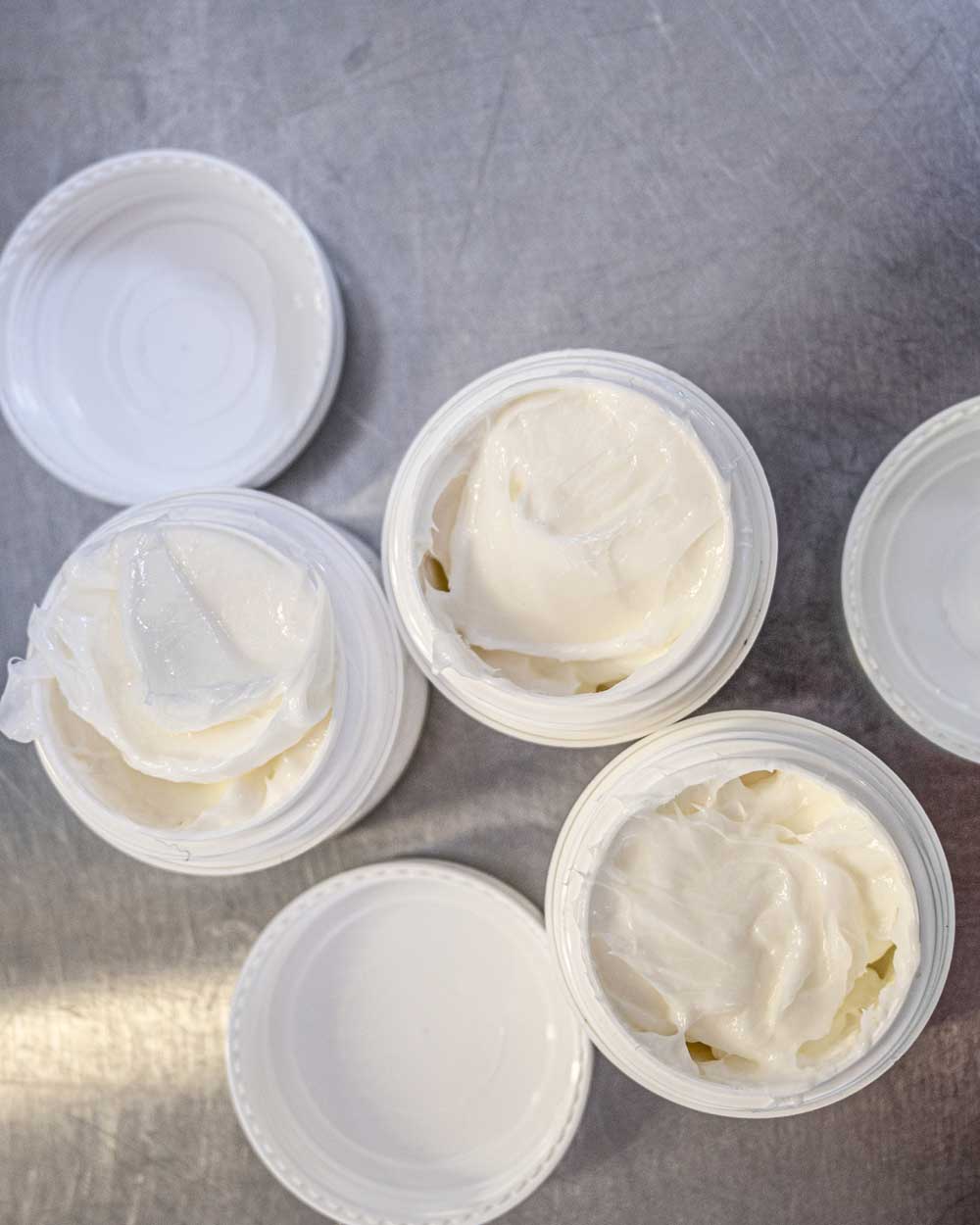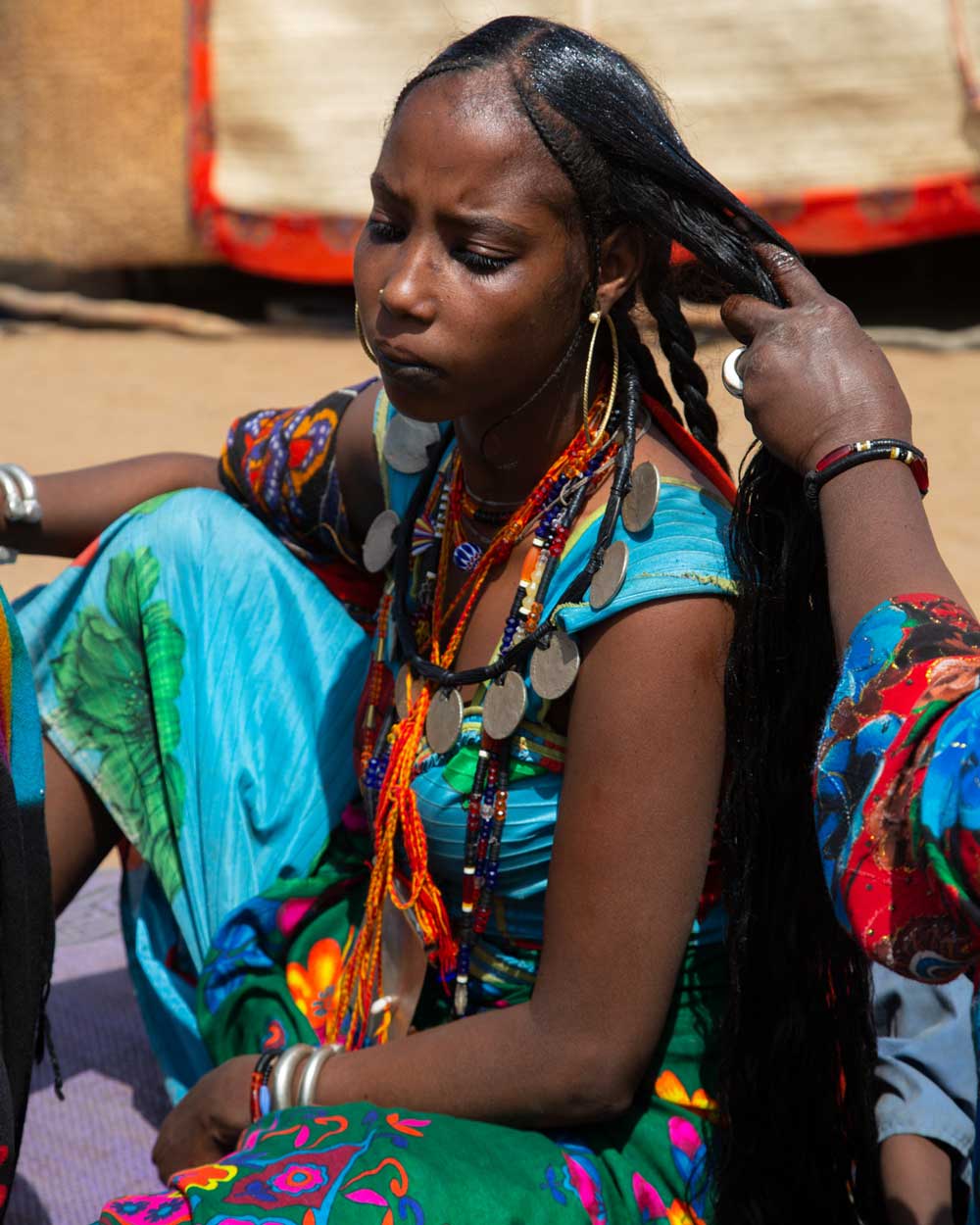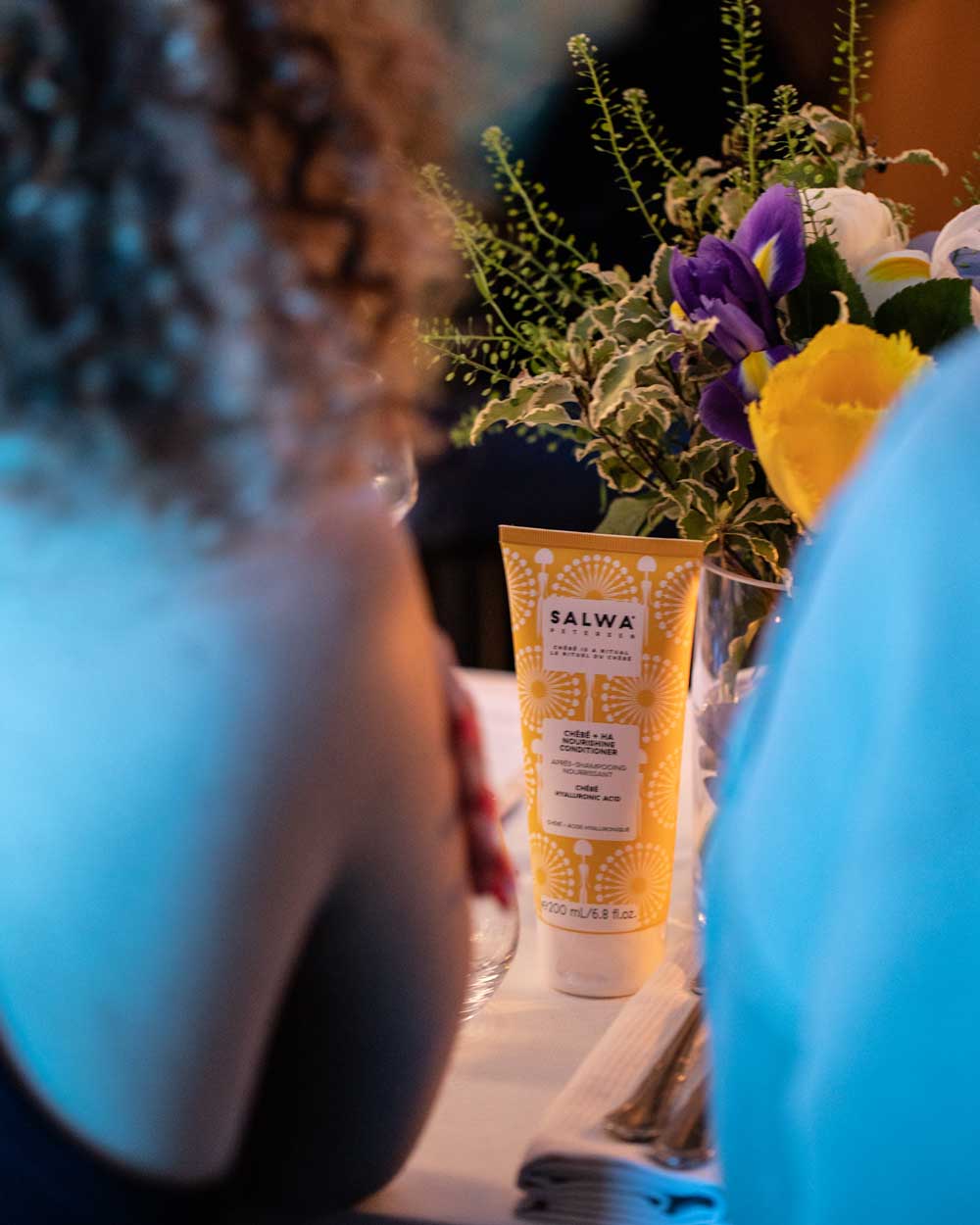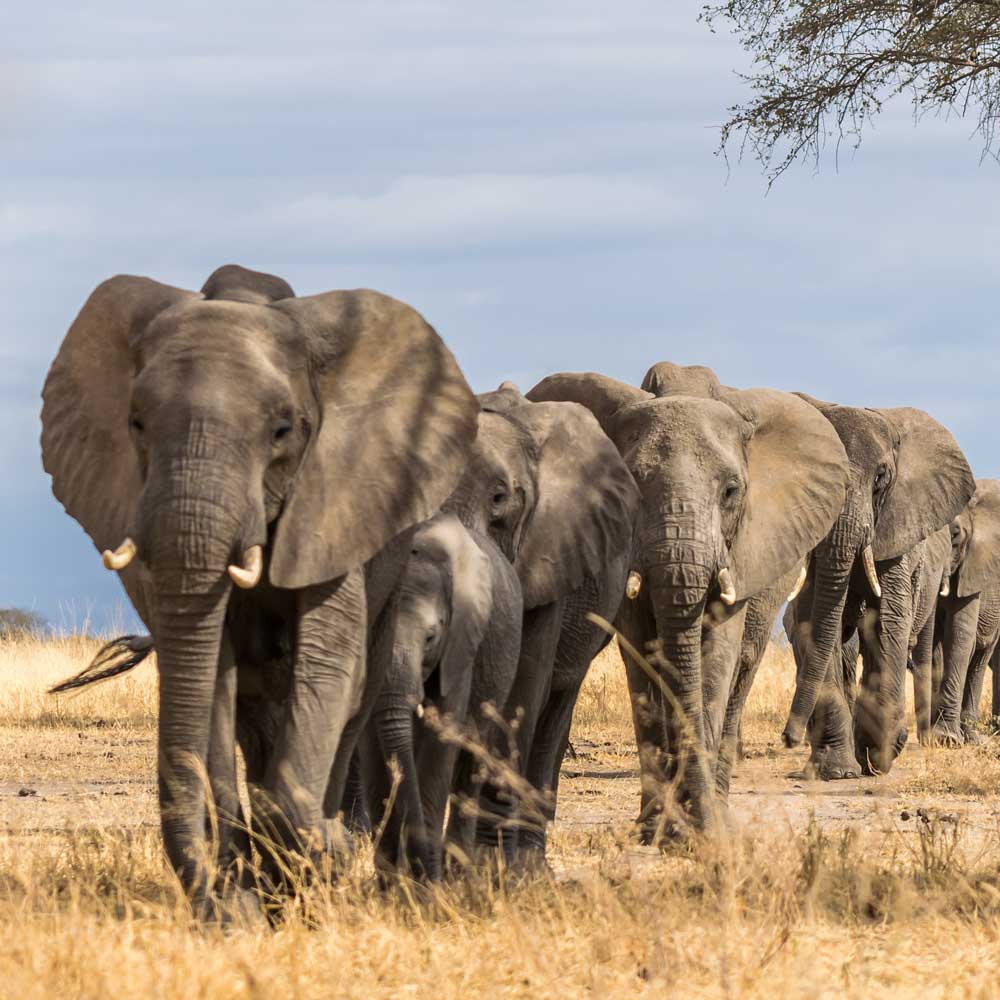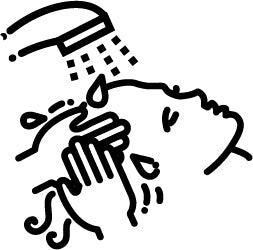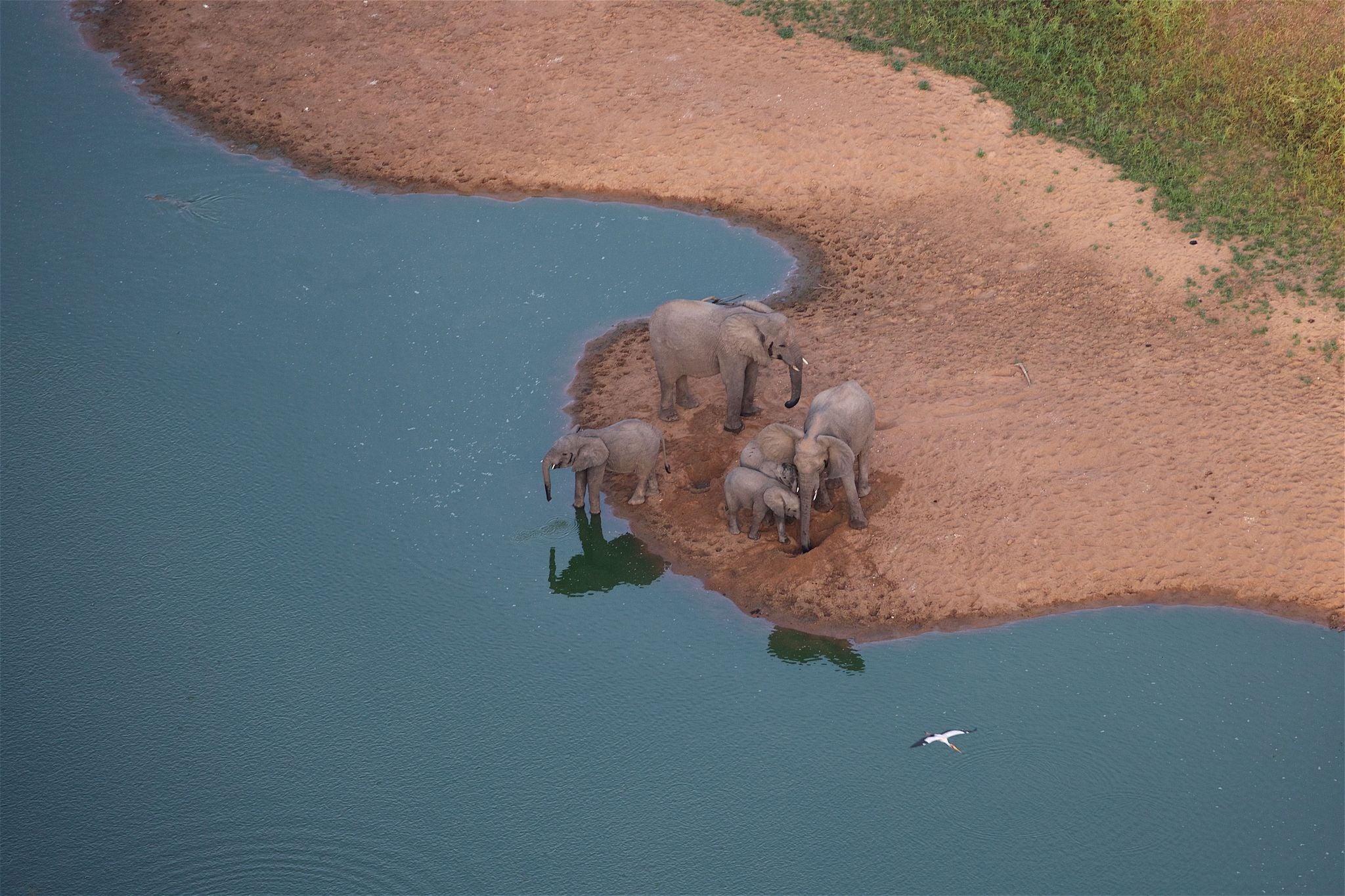GLOSSARY
A
Afro/Fro
Worn by Black people, a hairstyle that celebrates the natural growth of curly and coily hair, and its ability to form a full-volume, round halo-like shape.
B
Bantu Knots
Originating from southern Africa, a protective hairstyle where coily hair is sectioned off, twisted, and coiled in a way that forms a spiraling knot.
Big Chop
A big haircut to chop off chemically straightened or permanently damaged strands, in order to transition back to natural, curly hair. The result is often a short style that allows for new, healthier growth.
Bonnet
A cap used to protect curls and coils overnight during sleep.
Braid-out
A hairstyle achieved by braiding wet or damp hair. Once dried, the braids are unraveled to create juicy, defined curls or waves.
Breakage
When hair breaks due to extreme dryness, tangles, or excessive manipulation.
Build-up
When products, natural oils, and minerals from water build up on the scalp and hair over time, causing dullness, frizz, and itchiness.
C
Chemically Treated Hair
Hair that has been processed with chemical-based products such as relaxers, perms, texturizers, and hair dyes.
Clarify
To deeply cleanse the hair once or twice a month, removing build-up and restoring the hair to a bouncier, cleaner, and frizz-free state.
Clumping
A method used to coax curls together for plumper results.
Coily Hair
A hair texture with tight, spongy strands. In other systems, coily hair may be described as Type 4.
Cornrows/Canerows
Originating in Africa, a protective style that involves sectioning and braiding the hair close to the scalp in a continuous row.
Co-Wash
A cleansing conditioner that keeps hair hydrated and prevents the stripping of natural oils.
Crown
The sensitive center region of the scalp at the top and backmost area of your head.
Curl Type
Every texture type is unique, though many fall under the umbrella of these three types: wavy, curly, and coily.
Curly Hair
A hair texture with loose-to-tight springy tendrils. In other systems, curly hair may be described as Type 3.
D
Density
How closely the individual strands of hair are packaged together on the scalp.
Detangling
To slowly and gently remove knots and tangles from the hair.
Difussing
To use a diffuser with a hair dryer in order to speed up drying time, resulting in more defined curls and coils.
Dusting
To clip or “dust” the ends of the hair with scissors to remove damaged hair or split ends.
F
Finger Coiling
To style hair by taking small sections and wrapping around fingers or a hair rod, to create more defined curls.
Flat Twists
A protective style of sectioning the hair into rows, and twisting two stands at a time flat to the scalp.
Fluffing
To use fingers, a wide tooth comb, or a pick to add more value and shape to curly and coily hair.
H
Heat Damage
Damage caused by excessive and frequent use of heat when styling hair. Heat can change the hair’s original pattern, resulting in dry, dull strands.
L
LCO Method
A styling technique that involves applying products in the following order: a leave-in conditioner, a curl cream to define the hair, and oil to seal the treatment.
LOC Method
A styling technique that involves applying products in the following order: a leave-in conditioner, oil to seal in the moisture, and a curl cream to define it.
Locks/Locs
Originating in Africa, a hairstyle created when textured hair is coiled, twisted, or palm-rolled to create rope-like strands.
N
Natural Hair
Hair that has not been processed with chemical-based products such as relaxers, perms, or texturizers.
P
Pineappling
A method to protect textured hair while sleeping at night that involves wearing a high loose ponytail on top of the head. Pineappling helps textured hair remain defined and frizz-free.
Plopping
To gently remove excessive water from textured hair by collecting wet strands in a t-shirt or microfiber towel.
Porosity
The capacity for hair to absorb and release moisture.
Protective Styles
Hairstyles designed to protect natural hair from tangles, sun, chlorine, and other environmental damages. Protective styles keep the ends of the hair covered and typically include braids, twists, buns, wigs, and sew-ins.
S
Scrunching
To take sections of hair in the palm and squeeze it while moving upwards. Scrunching helps curls form faster.
Sealing
To seal moisture into the hair using oil, which helps keep the hair shaft hydrated.
Sew-in
A protective style where the natural hair is braided down completely, and hair extension wefts are then sewn into the braids.
Shrinkage
The difference in length that occurs when textured hair is wet vs. dry. Wet hair generally appears longer and will shrink when it dries.
Slip
A product’s ability to allow hair strands to glide against one another, thus reducing and removing tangles.
Stretching
A method of styling the hair to elongate the curls. Common stretching styles include twist-outs and braid-outs.
T
Twist-out
A hairstyle achieved by sectioning the hair into two-strand twists. Once dry, the twists are unraveled resulting in defined curls and waves.
Two-strant Twist
A protective style where the hair is divided into two sections and then twisted together.
W
Wash 'n' Go
When hair is washed and styled without heat or manipulation.
Wavy Hair
A hair texture with bendable, loose “S” shape locks. In other systems, wavy hair may be described as Type 2.

